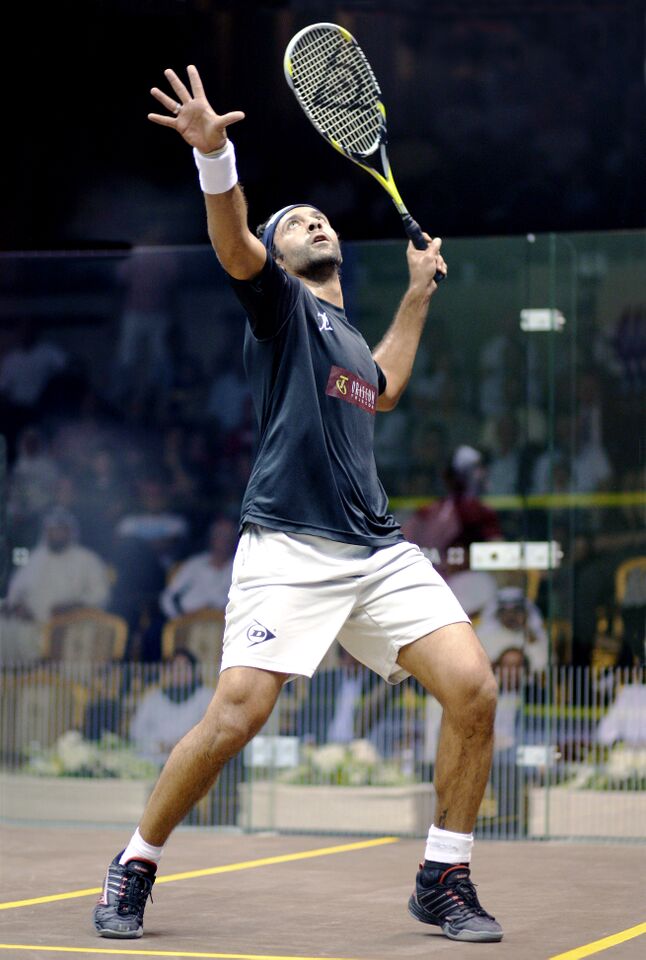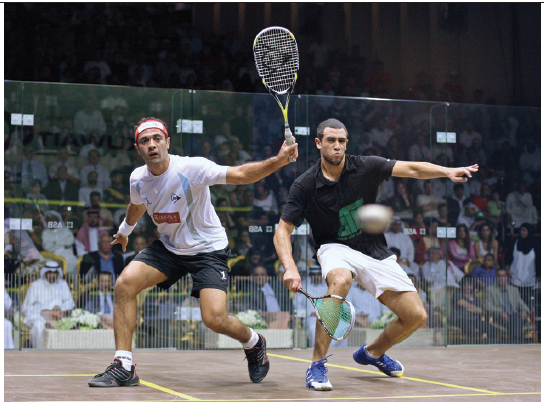By Jay D. Prince
In 1995, I started pursuing the idea of launching a magazine truly dedicated to bringing the sport of squash to life. I wanted to see big colorful photos, instructional articles that would help readers get better at all we do and go through on the court, and feature stories to bring the game to life in your leisure off-court time.
I wrote a proposal for the then USSRA while rocking my one-year-old in a car seat with my foot as he napped. Two years later, Squash Magazine was born.
The first memorable article I wrote was after Eric Pearson beat Peter Kelly in the 1998 U19 Junior Nationals. Since then I’ve been witness to eighteen years of amazing squash and have memories too numerous to mention. One fun one was watching Mexico’s ten-year-old Miled Zarazua passing time at the U.S. Junior Open by climbing the sloped support columns at Yale—who knew he would be part of Trinity’s dynasty someday. Another was Jahangir Khan taking Pakistan’s best junior on a grand tour of the court during a practice day at the World Junior Championships at Princeton in 1998. In the early 2000’s, I watched Julian Illingworth leave Eric Wadwha shrugging his shoulders in the quarters of the U.S. Junior Championships wondering who the heck this kid was from Portland—a kid who would ultimately become the highest-ranked American male ever.
I’ve witnessed the evolution of court technologies and events that are on the verge of astounding and have brought us to the doorstep of the Olympic program. The U.S. Open has grown from being a small event in the Minneapolis Athletic Club gymnasium to being hosted in Boston’s Symphony Hall to now being an annual world-class championship at Drexel University.
The court has gone from the “plastic” Perspex court where the walls literally bent when pushed against, to stunning glass with digital scoreboards in the tins and giant foursided screens hovering over the court.
Communicating has gone from telephones, faxes and snail-mail, to email, texting, Facebook and Twitter. My first true sense of how vastly different things had become happened when I watched my first livestreamed match when David Palmer overcame a commanding lead by Greg Gaultier at the 2006 World Championships in Cairo. With the court outdoors by the pyramids, I desperately needed to reach Anthony Ricketts who was overdue with an article he was writing. I could see Steve Line, the best squash photographer in the world, sitting in his usual place outside the front wall of the court, so I sent a text asking if he had seen Anthony. He had, delivered my message, and Anthony emailed me that night. Awesome.
The printing industry has changed dramatically too. In 1998, we still produced film before being able to print the magazine; and photographers mailed me prints to choose from. Today, film is all but dead and photography is virtually entirely digital. The production process has gone from two weeks to one; the Internet has all but replaced print as a news source; and the iPad is gradually replacing the printed publication, though it will be interesting to see if that really happens given our propensity for holding a printed book, magazine and newspaper.
I’ve seen Trinity College go from nothing to nothing but amazing; Alicia McConnell go from awesome squash player to a fixture with the USOC in Colorado Springs; The USSRA become US Squash and move from Philadelphia to New York. And I’ve seen the culmination of years of passion for the sport growing the magazine independently into a feature publication of US Squash since merging in 2013.
And now my run is over. This is my last issue of Squash Magazine.
After spending the last two years guiding the transition from independent publication to a core component of US Squash communications, I am eager to discover where I go next with my career. It is hard to leave this magazine, and I will always have no regrets about the past eighteen years. It’s a bittersweet moment for me. My passion for the game is unwavering; my involvement will hopefully continue—I just haven’t figured out in what capacity.
Meanwhile my one-year-old in that car seat is now in his junior year at UCLA and passionate about neuroscience; and my daughter has just begun her senior year of high school, accomplished at competitive cheer (including placing fifteenth at the World Cheer Championships last spring), and is working on her college applications. So thank you all for your support over the last two decades. I will keep my fingers crossed that our fabulous game will, one day, become an Olympic sport. That has been my biggest hope for squash and still is. See you on the courts.





